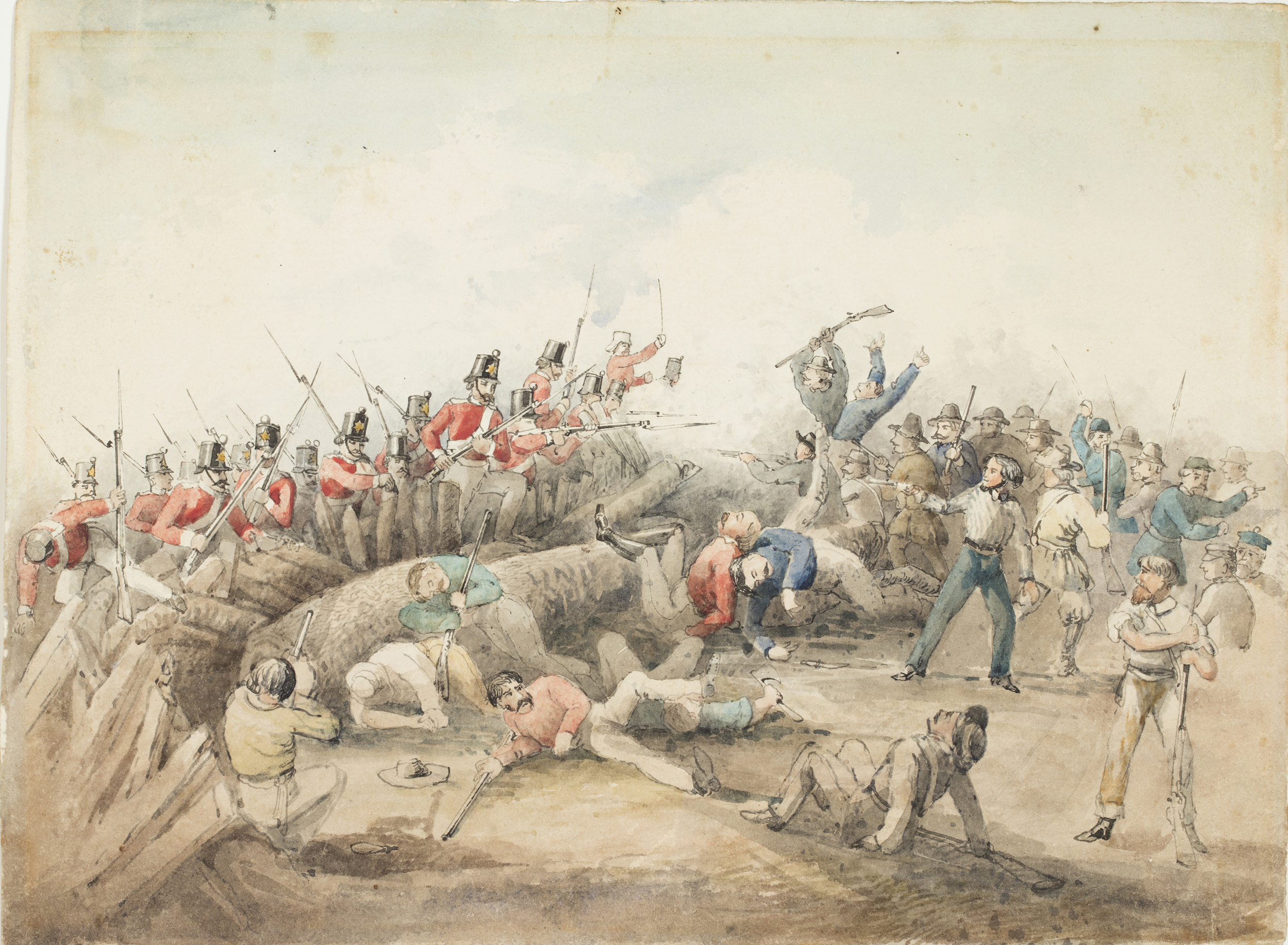
Eureka Rebellion
The Eureka Rebellion was a series of events involving gold miners who revolted against the British colonial government in Victoria, Australia during the Victorian gold rush. It culminated in the Battle of the Eureka Stockade, which took place on 3 December 1854 at Ballarat between the rebels and the colonial forces of Australia. The fighting left at least 27 dead and many injured, most of the casualties being rebels. There was a preceding period beginning in 1851 of peaceful demonstrations and civil disobedience on the Victorian goldfields. The miners, many of whom such as Raffaello Carboni came from Europe and were veterans of the Revolutions of 1848, had various grievances, chiefly the cost of mining permits and the officious way the system was enforced.
Date
1851–1854
Gold miners and the Victorian colonial government
- Rebellion put down by the colonial government
- Fall of the Eureka Stockade
- Thirteen rebel prisoners acquitted in the 1855 Victorian High Treason trials
- Tax and electoral reform
Tensions began in 1851 with the introduction of a tax on the occupation of the gold fields. Miners began to organise and protest the licence fee across all the mining settlements. In Ballarat, there were a number of mass meetings, including one where the miners burnt their licences and resorted to violence following the murder in October 1854 of James Scobie, who tried to gain late-night access to a local hotel. An inquest presided over by a magistrate accused of having a conflict of interest found that no one inside the hotel, including the owner, James Bentley, was criminally liable for Scobie's death. Thousands of protesters gathered near the hotel, which was then burnt down. An armed insurrection broke out on 29 November 1854, as a crowd of some 10,000 swore an oath of allegiance to the Eureka Flag. Peter Lalor took the initiative of mounting a stump and declaring "liberty" whilst armed with a rifle, thereby becoming the de facto leader of the rebel camp. About 1,500 miners were responsible for erecting the Eureka Stockade over the next few days, which was overrun by government forces on 3 December 1854 after a brief early morning siege that ended the revolt. A group of thirteen captured rebels, not including Lalor, who was in hiding, was put on trial for high treason in Melbourne. Mass public support led to their acquittal.
The legacy of the Eureka Rebellion is contested. Peter Lalor was elected to the parliament in 1856, though he proved to be less of an ally to the common people than expected and opposed some of the reforms sought by the rebels that were eventually implemented. There was a strong Chartist presence in the anti-mining tax movement, and legislation providing for universal adult male suffrage for Legislative Assembly elections and the removal of property qualifications for lower house members was enacted. The rebellion is controversially identified with the birth of democracy in Australia and interpreted by many as a political revolt.
There is a debate about the location of the historical Eureka Stockade, and an interpretative centre is now situated at the Eureka Stockade Memorial Park. A number of landmarks have been named for the rebellion that is still featured in the popular culture.
Australian rebellions:
General: